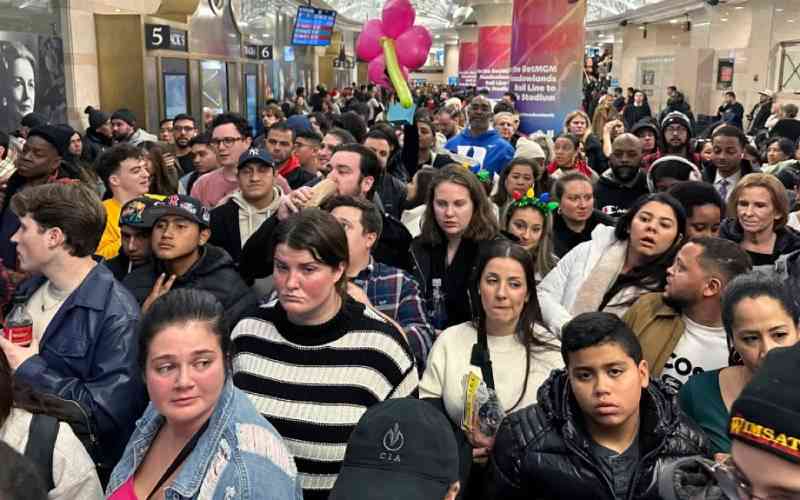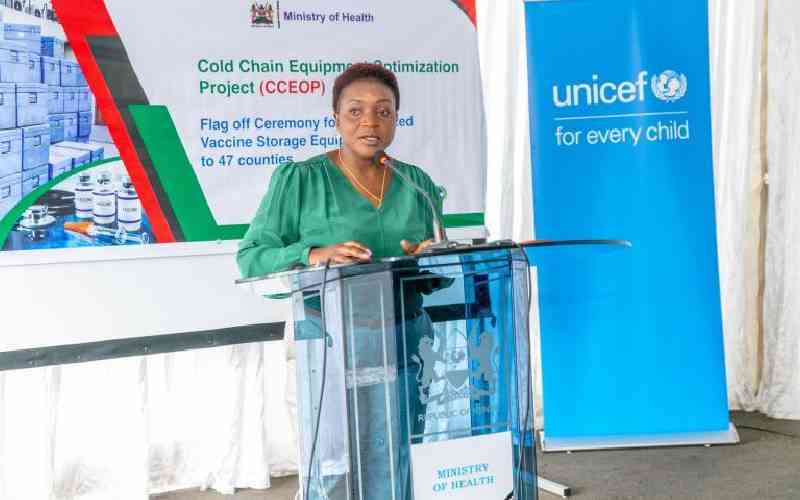One chilly morning in 2008, Angelique Pitteloud was casually flipping through TV channels at her home in Switzerland when something caught her attention.
An animated newscaster was talking about violence in an African country. According to the newscaster, the violence was now turning ethnic. Many lives had already been lost. More were at risk.
“This item hit close to home. I knew there were places such violence would break out but not in Kenya,” Angelique says. “This was so surreal. It took a few minutes for the magnitude of the violence that was going on to sink in.”
As the days of violence turned into weeks and eventually months, each day of bad news from Kenya brought to life her own dark memories.
“I went back to my childhood. To all the bloodshed. All the death and destruction,” she says. The 44-year-old is a survivor of the 1994 Rwanda Genocide.
And, like most of her contemporaries, it is nearly impossible for her to keep a dry eye while remembering any of the 100 days during which her country was a killing field.
Over the course of 100 days from April 6 to July 16 1994, an estimated 800,000 to one million Tutsis and some moderate Hutus were slaughtered.
During that period, more than six men, women and children were murdered every minute of every hour of every day. This brutally efficient killing was maintained for more than three months.
Between 250,000 and 500,000 women were raped and up to 20,000 children born as a result of rapes.
More than 67 per cent of women raped during the genocide were infected with HIV and Aids.
As of June 2013, there were 21,039 exceptionally vulnerable survivors receiving hardship allowances; 75,000 of survivors were orphaned as a result of the genocide.
Over half the children stopped their schooling, because of poverty and almost all of them have grown up scarred.
“As with any conflict, it is the children who bear the most hurt,” Angelique says. “They are between worlds. They know death, yet they also know life. And they understand none of the two.
“I know from personal experience that such a tragedy can leave one with deep feelings of fear that this could happen again.”
Locally, the United Nations Children’s Fund body estimates that at least 100,000 children were forced to flee their homes due to the wave of violence that swept through Kenya after the 2007 elections.
Stay informed. Subscribe to our newsletter
Of the displaced, more than 75,000 were forced to live in deplorable conditions in more than 100 camps for internally displaced persons, while the rest are believed to have lived temporarily with other family members.
Modest difference
Angelique says going through traumatic events like the genocide or Kenya’s post-election violence shapes one’s consciousness forever.
“You never really recover but you can turn horrific experiences into positive energy.
“The course of my life changed after 1994 because protection of the weak became some sort of an obsession.
“I now believe that I can make a modest difference by sharing my experience,” she says.
Having known the pain that conflict creates, Angelique, together with British actor and film director Nick Reding and the award-winning Kenyan director Wanuri Kahiu decided to do something about it.
“We decided to shoot a documentary amongst school children to try and make the adults understand that all the negativity we thrive in as adults in ardently rubs off our children,” says Wanuri.
“How we talk of and relate to other tribes is exactly how our children will relate with them.”
The documentary, titled Who Am I, is directed by Wanuri. It explores children’s reactions to different situations in an effort to understand discrimination based on national identity.
“The point we wanted to make was highlight the absurdity and meaninglessness of discrimination and tribalism through the eyes of children,” Wanuri says.
Like Angelique and the documentary’s co-producer Nick Reding — who is known for Ni Sisi and Ndoto za Elibidi — Wanuri believes that the film will start a conversation that should be had.
The film begins with shots of primary school children from different Kenyan institutions in conversation with each other.
The children then introduce themselves and are asked a series of questions by different instructors.
“Mnafikiri hapa Kenya tunakaa kwa Amani?”
“Hapana... kuna wezi wengi, watu wanapigana na serikali, kuna Al-Shabaab...”
“Mbona tunaeza kua maadui na watu wengine,” the instructor probes further, “kwa sababu ya kabila, wengine ni wakristo na wengine ni waislamu...”
Through the film, we realise that even at tender ages, children are alive to ethnic and religious issues that continue to divide Kenya.
“With this documentary, what we want to do is to focus on discrimination and have a positive spin on its outcomes,” Wanuri says.
“So, rather than dealing with issues such as ethnic violence, we wanted to make a film that shows the possibility of change, and the possibility of, I would like almost to say, rehabilitation.
“So we concentrate on ways of creating the idea of a good person.Rather than just saying ‘this person is bad’ or ‘this person is good’ because he/she comes from this or that place, or belongs to a particular social class, we concentrate on trying to get the children to understand the idea that a good person is a good person because he/she is kind, because of his or her personality traits.”
As the film continues, the children are put through different situations pointing to a certain superiority among a number of them.
For instance, the instructors initially tell the children that big-headed children are cleverer than small headed ones, of course after measurements are taken.
In every session, the instructors pick on those with big heads to answer questions and they are showered with praises.
To the contrary, the small headed ones are never picked and are continuously put down even though they know all the right answers.
After a while, the ‘small heads’ feel slighted and look dejected and discouraged in class.
After a while, some start crying, and say that they are just as good as the ‘big heads.’
Crucial issues
However, all this changes and eventually the teachers say that it is actually the small heads who are clever.
They then proceed to accord the small heads all the favours that the big heads were previously getting.
However at the end of the exercise they come to the self-realisation that discrimination is not worth it.
“Nillikua naskia vibaya kwa sababu tulikua tumetengwa na wengine wanatuchekelea...” says one child. “They were not treating us equally.”
Angelique says that through the film, they hope to combat ignorance and hatred at early ages.
For Wanuri, children are our last line of defense. Well sort of.
“The only way that we are going to save ourselves and the generations that are coming after us is if we shift our focus to the children.
“We need to help them think in a different way. We need to make them understand that we are born into ourselves and have no choice over the tribe, gender or race that we are.
“This way, maybe some of the negativity might be done away with,” Wanuri says.
Reding, the film’s co-producer, is a British actor whose most notable roles in the UK included long running stints in two UK detective series, The Bill and Silent Witness.
He quit the silver screen for life to set up a non-governmental organisation, Sponsored Arts For Education, that focuses on educating people about HIV and Aids, as well as many other crucial issues such as female genital mutilation, rape and malnutrition, via the medium of theatre.
He recently launched his own film, Watatu, that explores radicalisation of youth at the Kenyan coast.
“His involvement with the grassroots is what endeared me to him,” says Angelique, who is the wife to the current Swiss Ambassador to Kenya as well as the goodwill ambassador for SOS Children’s Villages Kenya.
Who Am I premieres in July and the producers hope to showcase it schools countrywide.
 The Standard Group Plc is a
multi-media organization with investments in media platforms spanning newspaper
print operations, television, radio broadcasting, digital and online services. The
Standard Group is recognized as a leading multi-media house in Kenya with a key
influence in matters of national and international interest.
The Standard Group Plc is a
multi-media organization with investments in media platforms spanning newspaper
print operations, television, radio broadcasting, digital and online services. The
Standard Group is recognized as a leading multi-media house in Kenya with a key
influence in matters of national and international interest.
 The Standard Group Plc is a
multi-media organization with investments in media platforms spanning newspaper
print operations, television, radio broadcasting, digital and online services. The
Standard Group is recognized as a leading multi-media house in Kenya with a key
influence in matters of national and international interest.
The Standard Group Plc is a
multi-media organization with investments in media platforms spanning newspaper
print operations, television, radio broadcasting, digital and online services. The
Standard Group is recognized as a leading multi-media house in Kenya with a key
influence in matters of national and international interest.









